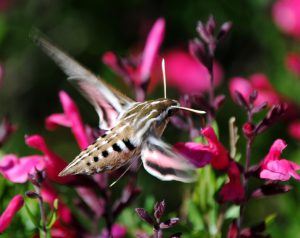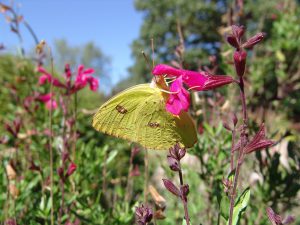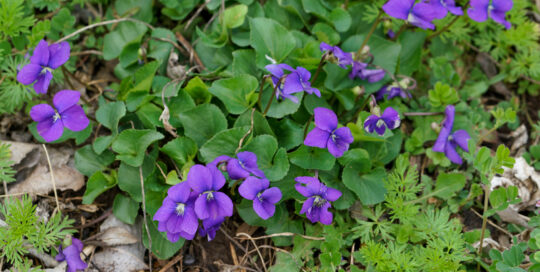Autumn sage (Salvia greggii) is extremely hardy in the garden
Views: 7665

July and August in Oklahoma are brutal but Autumn sage (Salvia greggii) thrives in these conditions, anyway. The temperatures soar into the 100s every afternoon, and we’re lucky if it ever rains. Week after week, we watch the 30% chance of rain four days away disappear into no chance of rain when the day arrives. And day after day, my gardens wilt. When they don’t perk up overnight, I know I need to water.
I don’t have any sprinkler systems set up in my yard, so everything has to be watered by hand. That’s a chore with many flowerbeds, so I’ve always chosen to plant things that can tolerate heat and drought. It’s hard to keep anything alive that isn’t moderately suitable for xeriscaping.
Some of my plants are more carefree than others. One that I just don’t have to worry about is Salvia greggii, sometimes called Texas Sage.
Native to the Chihuahuan Desert at high altitudes, Salvia greggii laughs at Oklahoman summers. It blooms from early spring into fall, never being entirely devoid of flowers. To give you an idea of their hardiness, over the years, I’ve planted over ten Salvia greggii of various cultivars, and not one of them has died. I’ve even transplanted a couple, and unlike many natives that resent being moved, my Salvia greggii bounced back quickly. Whenever someone asks me to recommend a perennial for Oklahoma, my first answer is always Autumn sage.
Unfortunately, Salvia greggii does not tolerate extreme cold. Some varieties will survive in Zone 6 (‘Furman’s Red’ and ‘Wild Thing’ are two), but most are limited to Zones 7-9.
While my plants don’t seem to mind wet, rainy springs, I suspect they will not tolerate soil that doesn’t drain. This is true of most sages, so I wouldn’t plant Salvia greggii in the soggy part of your flower bed.
Coming from a desert, Salvia greggii doesn’t need rich soil and would probably do just fine in rock gardens, although I have planted all of mine in beds. It will do fine in slightly alkaline soil but tolerates a wide variety. While it has done well in beds that I have enriched, I would not over feed it. It will thrive without fertilizer. They’ll also do best in full sun.
My mature Salvia greggii are woody, shrub-like plants, 3-4 feet high, and equally as wide. Younger plants are more compact, but it’s important to give them room to grow. Colors are usually in the pink spectrum, but cultivars vary from red to yellow. Hard winters may freeze the plant back to the ground, or almost so, but prune the dead wood in spring and it will come back from the roots and/or remaining wood. A local nursery recommended pruning them back 1/4 every spring regardless of how harsh the winter was, and that seems to have worked pretty well for my plants, getting rid of any dead tips that would be unsightly sticking up above the foliage if I left them alone.

Sulphur butterflies and hummingbirds frequently visit Autumn sage.
The best thing about Salvia greggii is that it provides a reliable source of food for hummingbirds and butterflies. My hummers buzz around them all summer, and I’ve seen several species of butterflies on them. Large sulphurs, dogfaces, and yellow butterflies seem to be especially fond of theses flowers, but I have also seen clouded skippers, white-lined sphinx moths (see featured image), and others on them as well.
Meet Leslie Miller
Leslie Ann Miller shares 3.5 acres in rural Oklahoma with birds, butterflies and wide variety of animals. She is currently transforming her yard with plantings…
Leslie's Recent Posts

Early spring is time to plant native spring ephemerals






